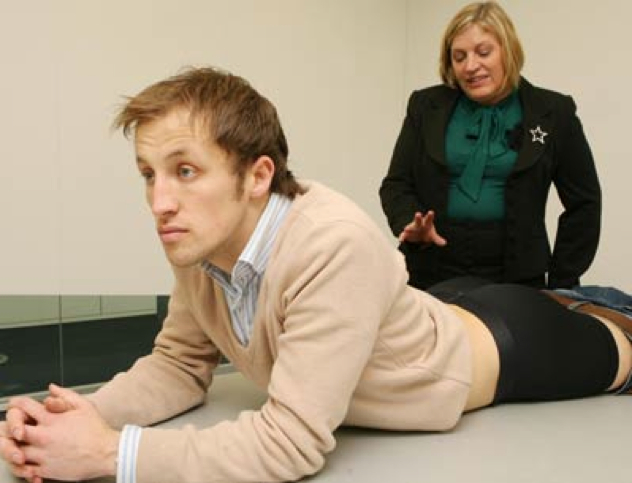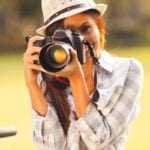 Weird Stuff
Weird Stuff  Weird Stuff
Weird Stuff  Our World
Our World 10 Ways Your Christmas Tree Is More Lit Than You Think
 Movies and TV
Movies and TV The 10 Coolest Stars to Set Sail on The Love Boat
 History
History 10 Things You Didn’t Know About the American National Anthem
 Technology
Technology Top 10 Everyday Tech Buzzwords That Hide a Darker Past
 Humans
Humans 10 Everyday Human Behaviors That Are Actually Survival Instincts
 Animals
Animals 10 Animals That Humiliated and Harmed Historical Leaders
 History
History 10 Most Influential Protests in Modern History
 Creepy
Creepy 10 More Representations of Death from Myth, Legend, and Folktale
 Technology
Technology 10 Scientific Breakthroughs of 2025 That’ll Change Everything
 Weird Stuff
Weird Stuff Ten Bizarre Facts About The Doge Meme
 Our World
Our World 10 Ways Your Christmas Tree Is More Lit Than You Think
 Movies and TV
Movies and TV The 10 Coolest Stars to Set Sail on The Love Boat
Who's Behind Listverse?

Jamie Frater
Head Editor
Jamie founded Listverse due to an insatiable desire to share fascinating, obscure, and bizarre facts. He has been a guest speaker on numerous national radio and television stations and is a five time published author.
More About Us History
History 10 Things You Didn’t Know About the American National Anthem
 Technology
Technology Top 10 Everyday Tech Buzzwords That Hide a Darker Past
 Humans
Humans 10 Everyday Human Behaviors That Are Actually Survival Instincts
 Animals
Animals 10 Animals That Humiliated and Harmed Historical Leaders
 History
History 10 Most Influential Protests in Modern History
 Creepy
Creepy 10 More Representations of Death from Myth, Legend, and Folktale
 Technology
Technology 10 Scientific Breakthroughs of 2025 That’ll Change Everything
10 Bizarre Things People Believe In
Pseudosciences are beliefs or practices that seem kind of “sciencey”—except for the fact that no one involved is overly concerned with testing their hypothesis. For instance, some people put their faith in aliens having built the Egyptian pyramids, the Bermuda Triangle having unusual powers, and the existence of Bigfoot. And while some of the pseudosciences—such as homeopathy—are borderline believable, there are an abundance of lesser-known theories that leave you scratching your head in disbelief.
Whether you think they’re true or not, there’s no denying that the following ten items are some of the weirdest pseudosciences in existence.

The next time you’re caught staring at someone’s derriere, just tell them you’re a rumpologist giving a free psychic reading. If they don’t believe you, refer them to the work of Jacqueline Stallone, Ulf Buck, Sam Amos, and others—all of whom insist that butts can offer insight into a person’s future. Instead of inspecting hands, rump readers inspect the cracks, crevices, folds, and dimples of the booty.
Although everyone’s bum is unique, rumpologist Sam Amos explains that a round bottom suggests a person is “open, happy, and optimistic,” whereas a flat bottom can mean someone is “vain, negative, and sad.”
The number one rumpologist in America (there doesn’t seem to be much competition) is none other than Sylvester Stallone’s mother, Jacqueline Stallone. She claims that the left cheek reveals a person’s past, the right cheek the future, and the crack represents the line separating the two hemispheres of the brain. Stallone also says that she is simply reviving an ancient art, which dates back to the early Babylonians, Indians, Greeks, and Romans.
While most butt readers prefer to examine a client’s rear in person, Stallone can provide a reading with only a digital photograph and $125.

While most of us grew up thinking that folks from the Middle Ages believed the world was flat, and feared that Christopher Columbus would sail off the edge of the map, today’s historians have refuted this myth—and assure us that nearly everyone since about the fourth century B.C. considered the Earth to be round.
That said, there were and still are a few “flat-earthers” out there. Yes, despite Magellan’s crew navigating the globe, the advent of aeronautics, and photos of a clearly globular Earth taken by spacecraft—members of the Flat Earth Society maintain that it’s all a conspiracy.
According to the Flat Earth Society website, “The world looks flat, the bottoms of clouds are flat, the movement of the sun; these are all examples of your senses telling you that we do not live on a spherical heliocentric world.”
So, how do flat-earthers explain why astronauts haven’t noticed a pancake-like earth? They maintain that space agencies are faking space travel, and that the moon landing was a hoax. Similarly, they reason that photos are easily manipulated or misleading; barrel distortion, camera quirks, and the sun’s rounded “spot light” can all create the false appearance of a curved horizon.

Psychic surgeons allege that they can heal people who are suffering from cancer and other potentially terminal diseases—merely through touch. Practitioners are everywhere, yet they are especially popular in Brazil and the Philippines; in Manila alone, there are several hundred active psychic surgeons.
Typically, these surgeons will place their hands on a patient’s abdomen, make an “incision” with their finger, and push or contort the person’s skin as if they were actually reaching inside the body. Although the skin is usually not physically cut, observers will see blood flowing and tissues being extracted, and the surgeon will claim that he is removing the diseased areas. Critics say that psychic surgeons are merely using sleight-of-hand along with animal blood and organs, in order to trick onlookers. Illusionists like Criss Angel and Penn & Teller have even recreated the deception on their own shows, in an effort to debunk psychic surgeons.

Some people claim that so-called “pyramid power” can preserve food, keep razor blades forever sharp, improve health, increase sex drive, and more. Supposedly, the ancient Egyptians knew about these paranormal forces and used the geometric shape to their own advantage.
Pyramidology took off in the 1970s when Patrick Flanagan published the book “Pyramid Power.” Flanagan and others point to Antoine Bovis’ studies, which argue that the rate of decay in organic matter slows down or stops beneath a pyramid which matches the exact dimensions of the Great Pyramid of Giza, and which is oriented to the Earth’s north-south axis (the material used to construct the pyramid does not matter).
Most devotees relay a story about Bovis being inspired when, upon visiting the Great Pyramid, he discovered non-decomposed animals inside the tomb. However, Bovis personally refuted this story, and said that he had never been to Egypt but had made his discoveries after creating pyramid models.
Advocates contend that Egyptologists found well-preserved grain and entire meals within the tombs, which—despite being over five thousand years old—were better preserved than anything kept for a few months in modern storage.
There’s virtually no scientific evidence either proving or disproving the power of pyramids, yet that hasn’t stopped supporters from sleeping under them, storing food under them, living in them, and even creating a model of the Pyramid of Khufu and using it as a winery.

According to attachment therapy, the primary reason kids misbehave is that they have not properly bonded with their parent or caregiver. In order to find a solution to this problem, the parent—guided by a therapist—must use a variety of methods to push the child towards a point of catharsis, after which the youngster will be able to behave with a suitable amount of affection.
But how exactly do they go about pushing these kids to the point of a mental breakdown? As you might imagine, it’s not easy. According to the American Professional Society on the Abuse of Children, many of the treatments involve a variety of coercive techniques, including “scheduled holding, binding, rib cage stimulation (e.g., tickling, pinching, knuckling), and/or licking. Children may be held down, may have several adults lie on top of them, or their faces may be held so that they can be forced to engage in prolonged eye contact. Sessions may last from three to five hours, with some sessions reportedly lasting longer.”
Even if a kid is spared from the purely physical trauma, some of the more bizarre psychological practices—such as rebirthing and forced bottle feeding—are more than enough to leave some mental scars.
Unfortunately, some attachment therapists lure parents into taking such drastic action by alleging that untreated children can end up becoming a psychopath like Ted Bundy.

Imagine something which can absorb electromagnetic radiation; convert light and magnetic fields into sound; process information without a brain; and which possesses a soul. While it sounds like something from a science-fiction movie, “melanin theorists” believe that all these properties are found in—you guessed it—melanin.
Of course, everybody has some melanin—which means, if this theory is true, that we all have at least a few of the traits listed above. Nevertheless, the real super-humans are apparently those with the most melanin and, consequently, the darkest skin. Melanists also allege that black people have more melanin in their brains and inside their bodies, which adds to their supremacy. As you probably noticed, this theory is inherently racist.
The exact nature of the theory varies among followers, but the most common principle is that ancient Egyptians were black skinned, and the source of all civilization—a correlation which was by no means incidental. White people are said to have inferior levels of melanin in comparison with their darker skinned counterparts, and are mere genetic mutations of the ultimate humans—Africans.
One of the most outspoken supporters of the melanin theory, Professor Leonard Jeffries, referred to whites as pigment-challenged “ice people” who are cold, egotistical, and exploitive. Comparatively, blacks are the “sun people”—warm, friendly, unfailingly humanistic, and spiritual.
Geneticists and biochemists have proven that all humans have fairly similar amounts of neuromelanin (brain melanin), and that no type of melanin has any supernatural abilities.

People hold a variety of convictions relating to the prevalence of modern diseases. Some think that processed foods, sedentary lifestyles, or increased exposure to toxins are among the causes. But according to Body Earthers, we’re simply not spending enough time with our bare feet in wet grass.
Body Earthers theorize that an overabundance of free radicals within our bodies can lead to diabetes, cancer, inflammation, and all sorts of other ailments. While some antioxidant-possessing foods can counteract free radicals, Earthers say that we’re missing out on one of the most vital antioxidants of all—the Earth.
Apparently, the Earth can transfer positive electrons into the body, and these electrons have the ability to neutralize potentially harmful free radicals. The ball of the foot is the ideal area to absorb the electrons, since it “connects to all acupuncture meridians and essentially connects to every nook and cranny of your body”—but just being in general contact with the ground is meant to be beneficial.
Unlike our ancestors, who regularly walked and slept on the Earth, it is thought that our newfangled rubber-soled shoes, concrete, and skyscrapers have all led to detrimental health effects by limiting our exposure to natural ground.

In the eyes of believers, there’s virtually nothing urine can’t do. It’s said to cure everything from the flu to cancer—and can even beautify the skin and lead to enlightenment by opening a person’s third eye. People ingest urine, rub it on their bodies, and are known to use it both warm (straight from the source) or cold.
The practice is by no means new; it actually dates back to Ancient Roman times, and is referenced in multiple long-standing religions. Urine drinking is so widespread in India that in 2009, an Indian Hindu group had plans to manufacture a product consisting of aloe vera, gooseberry, and cow urine. Their motivation was to promote health and to oppose Western food imports—but its unlikely that Coca Cola needs to start worrying yet.
Medical doctors have said that drinking urine is pointless at best, and in some cases can even lead to serious health complications. Urine from healthy individuals contains urea, kreatine, uric acid, ammonia, and other toxins. Urine from sick people may also contain acetone, salts from heavy metals, or even malignant bacteria. The practice is particularly dangerous for pregnant women, as it can lead to miscarriage or diseases of the fetus.
Sadly, it seems that you shouldn’t even sprinkle your leg with the golden liquid when stung by a jellyfish, since it can make things worse by activating nematocysts remaining on the site of the sting.

Looking at grumpy cats, honey badger videos, and ridiculously photogenic guys aren’t just things you do to waste time at work. According to those who promote memetics, these and other memes are units of culture capable of evolving and self-replicating—just like human genes.
While we may casually say that a meme has “taken on a life of its own,” those who value memetics take this notion seriously, asserting that ideas replicate for their own benefit and not for the sake of humans.
The fundamental concept behind memetics predates the internet craze, as it was first introduced by Richard Dawkins in his 1976 book “The Selfish Gene.” Dawkins argues that memes use human minds as a host, and replicate or change as they jump from individual to individual. Their success in the culture largely depends on their host’s willingness to contribute to their dissemination.
In chapter eleven of his book, Dawkins states: “When you plant a fertile meme in my mind you literally parasitize my brain, turning it into a vehicle for the meme’s propagation in just the way a virus may parasitize the genetic mechanism of a host cell. And this isn’t just a way of talking—the meme for, say, ‘belief in life after death’ is actually realized physically, millions of times over, as a structure in the nervous systems of individual men the world over.”
Some advocates even cite God as the ultimate meme. They don’t deny that God exists—but they believe that he only exists in the form of an idea which has spread over thousands of years, and which has taken on many forms and personalities based on the mutations caused by a particular host.

Dowsing is the practice of using a rod or stick to locate things underground. Often, the thing in question is water—but oil, metal, gems, and gravestones are also frequently sought after. During the process, the practitioner will usually hold a Y- or L-shaped stick, and follow its movements to the site of the sought after material. The stick may bob up and down or lean to the left or right, seemingly directing the holder of the instrument.
While it may seem odd that a twig could lead anyone to water, there are in fact many believers. For centuries, large communities of dowsers have existed in both America and Europe, and today they even meet up for large national conventions. Some dowsers think that the rods work by reacting to minerals in the ground—yet others need no scientific basis for the practice, and assume that the “divining rods” help them connect with a higher power.
Several scientific studies were conducted to prove the validity of the practice. The most notable was the 1987 Hans-Dieter Betz study, which concluded that most of the self-proclaimed dowsers in their sample pool had no exceptional skills. However, there were a handful of participants who did have a knack for finding water. Thus, Betz and his team concluded that there could be some truth to dowsing. Shortly after it was published, Betz’s study was picked apart by J. T. Enright and others, who said that the study was “conducted in a sympathetic atmosphere” (i.e. they were hoping to find proof) and that the data was interpreted in a skewed manner. In other studies, dowsers performed no better than the laws of probability would suggest.
In truth, the effectiveness of dowsing is hard to prove or disprove: there is, after all, a lot of stuff in the ground. Whenever water does turn up, it encourages believers to keep on believing.








